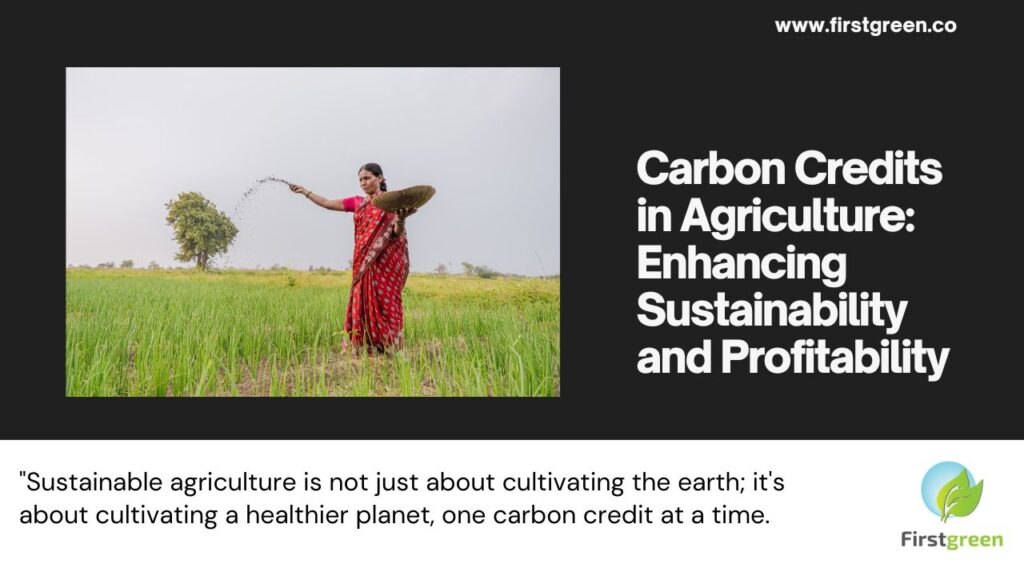Agricultural Carbon Credits: Successful Projects in India

As the global community pushes towards sustainability, agriculture is increasingly seen not just as a source of food but also as a potential contributor to carbon sequestration efforts. Here’s how the agriculture sector is leveraging practices that not only reduce or remove carbon dioxide from the atmosphere but also transform these environmental actions into carbon credits.
Understanding Carbon Credits in Agriculture
Carbon credits are essentially tradeable certificates that represent an amount of carbon dioxide removed from the atmosphere and stored in a reservoir—such as agricultural soil or forests—or emissions prevented through sustainable practices. Each credit typically represents one ton of CO2 either sequestered or avoided. Agricultural operations can earn carbon credits by adopting practices that reduce direct emissions or enhance carbon capture, which they can then sell on carbon markets to entities looking to offset their own emissions.
Case Studies of Agricultural Carbon Credit Projects in India
1. TIST Program in India, VCS 001 (Methodology: AR-AMS0001) The TIST program encourages smallholder farmers to engage in reforestation and afforestation efforts. Farmers are taught to plant and manage trees effectively on unused or marginal lands. These trees absorb CO2 as they grow, converting it into biomass and trapping it within the tree’s structure and the surrounding soil. The quantifiable increase in carbon storage is verified through third-party auditors and converted into carbon credits, providing additional revenue streams to farmers.
2. Agricultural Land Management in Beed District (Methodology: VM0017) In the arid Beed district, innovative land management techniques such as reduced tillage, cover cropping, and organic farming are introduced. These practices not only reduce the amount of CO2 released from the soil but also enhance the organic carbon content of the soil. This dual benefit of emission reduction and carbon sequestration makes this project a notable example of how land management changes can lead to carbon credits.
3. Agroforestry in Punjab (Methodology: AR-ACM0003) This project integrates trees into cropping systems, creating a symbiotic environment where both trees and crops benefit from each other. The trees not only help in capturing carbon but also improve the microclimate for crops, reduce erosion, and enhance water retention in the soil. The carbon captured in both the biomass and the soil can be quantified and certified, turning it into a profitable model for farmers through the sale of carbon credits.
4. Reforestation of Degraded Land by MTPL (Methodology: AR-ACM0001) Targeting degraded lands, this project focuses on planting native species that are better adapted to the local environment. This enhances the survival rate and growth speed of the trees, maximizing the carbon sequestration potential per hectare. The carbon credits generated from this project are an example of how ecological restoration can be economically viable.
5. Reforestation in Chhattisgarh (Methodology: AR-ACM0002) Similar to the MTPL project, this initiative focuses on reforesting degraded land but in a different region with different species. It shows the adaptability of the reforestation model across various Indian states, each with unique climatic and soil conditions. The project not only brings back native flora and fauna but also creates a sustainable model for generating carbon credits.
The Impact of Carbon Credits
These projects highlight the potential of carbon credits to incentivize agricultural stakeholders to adopt more sustainable practices. They demonstrate a powerful convergence of environmental stewardship and economic benefits, helping to transform agricultural practices towards more sustainable models. Moreover, they provide a roadmap for other regions and countries with similar agricultural contexts to follow, potentially leading to a global shift in agricultural strategies towards sustainability.
Through carbon credits, agriculture is proving to be a pivotal sector in the fight against climate change, turning sustainability into an economically viable option for farmers around the world.
